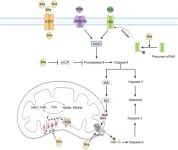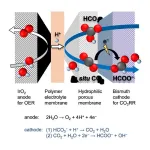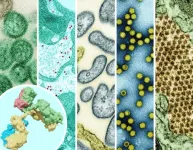(Press-News.org) ABSTRACT: 1476O
BARCELONA, Spain ― Treatment with a combination of haloperidol and lorazepam reduced symptoms of agitated delirium, a common end-of-life condition for patients with advanced cancers, compared with haloperidol alone, according to a new study led by researchers at The University of Texas MD Anderson Cancer Center. The findings were presented today at the 2024 European Society for Medical Oncology (ESMO) Congress.
Agitated delirium occurs when a patient’s brain function begins to deteriorate as their cancer advances, resulting in many patients beginning to behave aggressively or abnormally. Although the use of medication in this setting has been debated, these results suggest tailored combination treatments can significantly improve symptoms for patients at the end of life.
“Advanced delirium is common and highly distressing in many patients with advanced cancers receiving palliative care, but we’ve had limited evidence on the use and effectiveness of treatment for this condition,” said lead investigator David Hui, M.D., professor of Palliative, Rehabilitation & Integrative Medicine. “The RECORD trial offers valuable data and insights that support the use of therapy in the palliative care setting in order to provide patients with greater comfort.”
Patients that received the combination of haloperidol and lorazepam experienced a significant decrease in agitated delirium when measured at 24 hours with a standard scoring tool. In that same time frame, this group needed no more than two rescue doses, or additional medication provided as needed.
Researchers also observed a significant decrease in agitated delirium in patients treated with lorazepam alone, but these patients required more rescue doses. The placebo group saw very little reduction in delirium, and, in some scenarios, patients needed as many as five rescue doses.
The multi-center trial evaluated treatment in 75 adult patients across multiple cancer types. Patients received blinded treatment with the combination therapy, lorazepam only or placebo intravenously every four hours. The adverse events observed in the study were expected and consistent with the end-of-life process.
“By proactively personalizing treatment of this distressing symptom, we are providing caregivers, families and patients an opportunity for meaningful connection in the time they have remaining,” Hui said.
The trial is funded by the National Cancer Institute (R01CA214960). Hui was a consultant for Eton Pharmaceuticals. A complete list of collaborating authors and their disclosures can be found here.
END
ESMO: Combination therapy reduced agitated delirium in patients with advanced cancers
Proactive, personalized doses of haloperidol and lorazepam reduced agitation compared to haloperidol alone for patients undergoing palliative care
2024-09-14
ELSE PRESS RELEASES FROM THIS DATE:
SOPHiA GENETICS presents ground-breaking multimodal research on AI-driven patient stratification at ESMO 2024
2024-09-14
Boston, MA and Rolle, Switzerland, September 14, 2024 – SOPHiA GENETICS (Nasdaq: SOPH), a cloud-native healthcare technology company and a leader in data-driven medicine, will unveil new research at the European Society for Medical Oncology (ESMO) 2024. The study, conducted in collaboration with AstraZeneca, leverages advanced AI-driven techniques to identify subgroups of stage IV non-small cell lung cancer (NSCLC) patients who could most benefit from the addition of tremelimumab to durvalumab and chemotherapy.
The research is a retrospective, multimodal analysis of the POSEIDON Phase 3 clinical trial (NCT03164616). This trial originally demonstrated that the combination of tremelimumab, ...
Mitochondria at the crossroads of cholestatic liver injury: Targeting novel therapeutic avenues
2024-09-14
Bile acids are essential signaling molecules derived from cholesterol metabolism in the liver and are crucial for the digestion and absorption of fats. These molecules undergo further modification in the intestines by the gut microbiome. However, disruptions in bile flow, a condition known as cholestasis, can lead to the pathological accumulation of hydrophobic BAs in the liver and bloodstream. This accumulation not only exacerbates liver damage but also induces significant disturbances in cellular processes. The review focuses on recent developments in understanding how BAs contribute to liver injury by affecting mitochondrial function, endoplasmic reticulum ...
Scientists reveal new design for cells turning carbon dioxide into a green fuel
2024-09-14
Tokyo, Japan – Researchers from Tokyo Metropolitan University have made strides forward in realizing industrial conversion of bicarbonate solution made from captured carbon to a formate solution, a green fuel. Their new electrochemical cell, with a porous membrane layer in between the electrodes, overcomes major issues suffered in reactive carbon capture (RCC) and achieves performances rivaling energy-hungry gas-fed methods. Processes like theirs directly add value to waste streams and are key to realizing net zero emissions.
Carbon capture technology ...
Paying attention to errors can improve fused remote monitoring of lakes, researchers say
2024-09-14
Lakes can tip the scales from healthy to potential environmental hazard quickly when they become eutrophic. In this state, an abundance of nutrients accelerates algae growth, which then crowd the water’s surface and block light from reaching organisms below. Without light, they can’t make oxygen and life in the water begins to die off. Luckily, researchers can monitor inland lakes for eutrophication with remote sensing technologies; however, those technologies could be adjusted to make more accurate assessments, according to researchers based in China.
The team published their evaluation of the technologies, as well as recommended paths ...
Using training model to map planted and natural forests via satellite image
2024-09-14
While planting trees may seem like an easy win to combat climate change, planted forests often encroach on natural forests, wetlands, and grasslands. This can reduce biodiversity, disturb the natural environment, and disrupt carbon and water cycling. While there has been a global increase in forest cover, it’s hard to know if this forest is the regeneration and growth of natural forests or if it is planting new trees. Accurately mapping these forests with remote sensing technology could help.
However, comprehensive maps of planted forests and natural forests are lacking even though it is possible to distinguish planted forests and natural forests on satellite images ...
Illinois Institute of Technology Architecture Programs earn National Sustainability Designation from U.S. Department of Energy
2024-09-13
CHICAGO—September 13, 2024—The College of Architecture at Illinois Institute of Technology has been awarded the prestigious Zero Energy Design Designation (ZEDD) from the United States Department of Energy (DOE) for it Bachelor of Architecture and Master of Architecture programs. This recognition highlights the college’s commitment to sustainability, carbon neutrality, and zero-energy design practices in a world of escalating extreme weather and climate change.
The ...
Rice research could make weird AI images a thing of the past
2024-09-13
HOUSTON – (Sept. 13, 2024) – Generative artificial intelligence (AI) has notoriously struggled to create consistent images, often getting details like fingers and facial symmetry wrong. Moreover, these models can completely fail when prompted to generate images at different image sizes and resolutions.
Rice University computer scientists’ new method of generating images with pre-trained diffusion models ⎯ a class of generative AI models that “learn” by adding layer after layer of random noise to the images they are trained on and then generate new images by removing the added noise ⎯ could help correct ...
NIH awards establish pandemic preparedness research network
2024-09-13
The National Institutes of Health (NIH) has established a pandemic preparedness research network to conduct research on high-priority pathogens most likely to threaten human health with the goal of developing effective vaccines and monoclonal antibodies. Currently, many of the diseases caused by these pathogens have no available vaccines or therapeutics, and investing in this research is key to preparing for potential public health crises—both in the United States and around the world. NIH’s National Institute of Allergy and Infectious Diseases (NIAID) expects to commit approximately ...
$3.9 million grant accelerates UVA professor's efforts to detect Alzheimer’s early
2024-09-13
University of Virginia professor Mathews Jacob has secured a $3.9 million grant to advance his innovative research on detecting Alzheimer’s disease in its early stages. Jacob, who specializes in electrical and computer engineering, is teaming up with researchers from the University of Iowa and the University of California-San Francisco to push the boundaries of imaging technology that tracks the brain’s metabolic changes — offering a fresh perspective on studying neurodegenerative disorders.
Their focus is on advancing magnetic resonance spectroscopic imaging (MRSI). Unlike standard MRI, which primarily highlights structural changes, ...
Flowers use adjustable ‘paint by numbers’ petal designs to attract pollinators
2024-09-13
Flowers like hibiscus use an invisible blueprint established very early in petal formation that dictates the size of their bullseyes – a crucial pre-pattern that can significantly impact their ability to attract pollinating bees.
The study, by researchers at the University of Cambridge’s Sainsbury Laboratory also found that bees prefer larger bullseyes over smaller ones and fly 25% faster between artificial flower discs with larger bullseyes – potentially boosting efficiency for both bees and blossoms.
Patterns on the flowers of plants guide insects, like bees, to the centre of the flower, where nectar and pollen await, ...
LAST 30 PRESS RELEASES:
Orthopedics can play critical role in identifying intimate partner violence
Worms as particle sweepers
Second spider-parasitic mite described in Brazil
January 2026 issues of APA journals feature new research on autism, pediatric anxiety, psychedelic therapy, suicide prevention and more
Private equity acquired more than 500 autism centers over the past decade, new study shows
New cervical cancer screening guidelines from the US Department of Health and Human Services
Estimated burden of COVID-19 illnesses, medical visits, hospitalizations, and deaths in the US from October 2022 to September 2024
Smartphone use during school hours by US youth
Food insecurity and adverse social conditions tied to increased risk of long COVID in children
Earliest, hottest galaxy cluster gas on record could change our cosmological models
Greenland’s Prudhoe Dome ice cap was completely gone only 7,000 years ago, first GreenDrill study finds
Scientific validity of blue zones longevity research confirmed
Injectable breast ‘implant’ offers alternative to traditional surgeries
Neuroscientists devise formulas to measure multilingualism
New prostate cancer trial seeks to reduce toxicity without sacrificing efficacy
Geometry shapes life
A CRISPR screen reveals many previously unrecognized genes required for brain development and a new neurodevelopmental disorder
Hot flush treatment has anti-breast cancer activity, study finds
Securing AI systems against growing cybersecurity threats
Longest observation of an active solar region
Why nail-biting, procrastination and other self-sabotaging behaviors are rooted in survival instincts
Regional variations in mechanical properties of porcine leptomeninges
Artificial empathy in therapy and healthcare: advancements in interpersonal interaction technologies
Why some brains switch gears more efficiently than others
UVA’s Jundong Li wins ICDM’S 2025 Tao Li Award for data mining, machine learning
UVA’s low-power, high-performance computer power player Mircea Stan earns National Academy of Inventors fellowship
Not playing by the rules: USU researcher explores filamentous algae dynamics in rivers
Do our body clocks influence our risk of dementia?
Anthropologists offer new evidence of bipedalism in long-debated fossil discovery
Safer receipt paper from wood
[Press-News.org] ESMO: Combination therapy reduced agitated delirium in patients with advanced cancersProactive, personalized doses of haloperidol and lorazepam reduced agitation compared to haloperidol alone for patients undergoing palliative care








